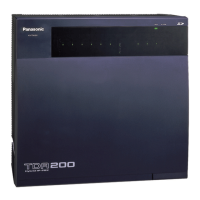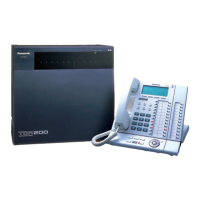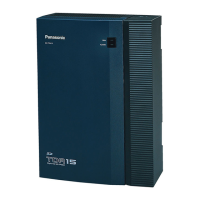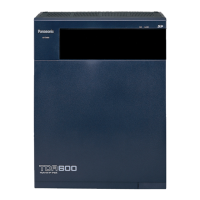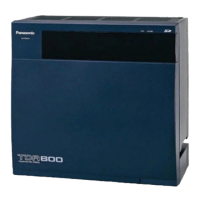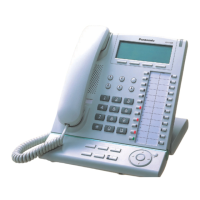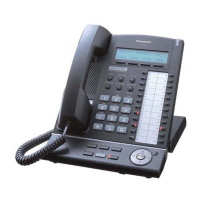2.3.6 Flexible Numbering/Fixed Numbering
Description
To
dial
another extension user or to access PBX features, the access numbers (extension numbers or feature
numbers) are required.
There are three types of numbering plans:
1. Flexible Numbering (available while a dial tone is heard)
2. Flexible Numbering (available while busy, DND, or ringback tone is heard)
3. Fixed Numbering (available while dialling or talking)
1. Flexible Numbering (available while a dial tone is heard)
Extension numbers and feature numbers which are available while a dial tone is heard can be customised
for easy use. The numbers must not conflict. It is also possible to use default (Type 1 or Type 2) shown in
the following table:
a. Extension Numbers: Extension numbers consist of leading numbers and additional numbers.
Extension numbers (consisting of "0" through "9") can be assigned as follows:
• Numbering schemes: 1-64
• Leading number: up to three digits
• Additional number: up to two digits (default: two digits)
b. Feature Numbers: A number of up to four digits, consisting of "0" through "9", "
", and "#"
c. Other PBX
Extension Numbers (Other PBX Extension Number [TIE] -1 through 16): A number of
up to three digits, consisting of "0" through "9", "
", and "#"
[Flexible Numbering Table (available while a dial tone is heard)]
Feature
Default
Type 1
(with )
Type 2
(without )
KX-TDA30/
KX-TDA100/
KX-TDA200
KX-TDA600
Extension Numbering Scheme 1—Lead-
ing Number
1 / 2 10 / 20 10
Extension Numbering Scheme 2—Lead-
ing Number
2 / 3 11 / 21 11
Extension Numbering Scheme 3—Lead-
ing Number
3 / 4 12 / 22 12
Extension Numbering Scheme 4—Lead-
ing Number
4 / 1 13 / 23 13
Extension Numbering Scheme 5—Lead-
ing Number
None 14 / 24 14
Extension Numbering Scheme 6—Lead-
ing Number
None 15 / 25 15
Extension Numbering Scheme 7—Lead-
ing Number
None 16 / 26 16
Extension Numbering Scheme 8—Lead-
ing Number
None 17 / 27 17
Feature Guide 415
2.3.6 Flexible Numbering/Fixed Numbering

